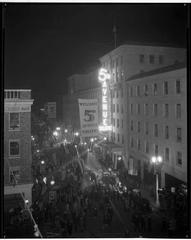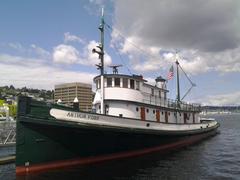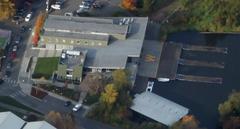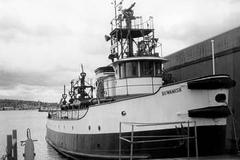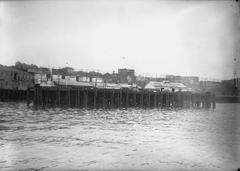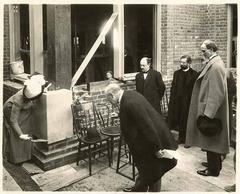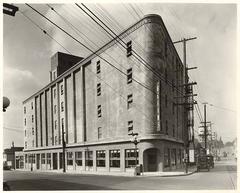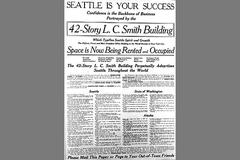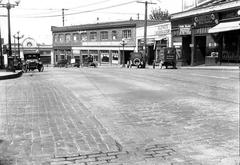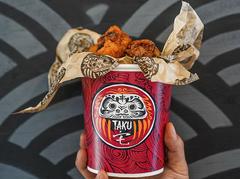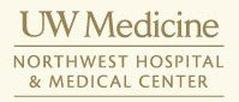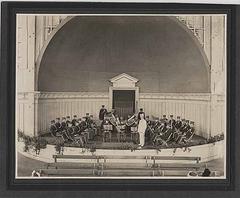Kobe Bell Seattle: Visiting Hours, Tickets, and Historical Sites Guide
Date: 04/07/2025
Introduction
The Kobe Bell, nestled within the vibrant Seattle Center, is a profound emblem of peace, friendship, and cultural exchange between Seattle and its sister city, Kobe, Japan. Gifted in 1962 during the landmark Century 21 Exposition (Seattle World’s Fair), this Japanese bonshō (temple bell) is more than a work of art—it is a living monument to cross-cultural understanding, diplomacy, and community engagement. Visitors can immerse themselves in history, art, and international relations, all within a tranquil garden setting at Seattle’s cultural hub (Seattle Center; City of Kobe; The Clio; Sah Archipedia).
Table of Contents
- Introduction
- Historical Background: Seattle–Kobe Sister City Partnership
- The Gift of the Kobe Bell
- Artistic Design and Symbolism
- Visiting the Kobe Bell: Hours, Tickets, Accessibility
- Location, Setting, and Accessibility
- Nearby Attractions and Travel Tips
- Special Events and Community Engagement
- Preservation and Ongoing Relevance
- Frequently Asked Questions (FAQ)
- Conclusion and Final Tips
- References
Historical Background: Seattle–Kobe Sister City Partnership
The sister city relationship between Seattle and Kobe was established in 1957, making it one of the earliest American-Japanese partnerships. This initiative, inspired by President Dwight D. Eisenhower’s post-war push for international reconciliation, was part of a broader movement to promote peace through direct people-to-people connections (The Clio; City of Kobe). Official ceremonies in both cities formalized the partnership, with delegations exchanging visits and establishing enduring bonds rooted in shared characteristics: both are port cities with strong universities, vibrant arts communities, and a commitment to international exchange (Sah Archipedia).
The Gift of the Kobe Bell
As a symbol of growing friendship, the people of Kobe gifted Seattle a ceremonial bonshō in 1962, coinciding with the Seattle World’s Fair. The bell’s bilingual inscription reads:
“Presented by the People of Kobe to the People of Seattle as a Symbol of Friendship. May this bell ring forever signifying friendship between the nations of the United States and Japan.”
This gift was intended to be a lasting symbol of peace, goodwill, and reconciliation, embodying the spirit of the sister city relationship (The Clio; Sah Archipedia; Wikipedia).
Artistic Design and Symbolism
The Bell
Cast in bronze and weighing approximately one ton, the Kobe Bell is modeled after traditional Japanese temple bells. Its surface is adorned with dragons, gods playing instruments, stylized female figures, seaweed, and lotus motifs—all deeply symbolic in Japanese culture (Waymarking). The bell lacks an internal clapper and is rung with a suspended wooden beam, producing a deep, resonant tone meant to evoke reflection and unity.
The Pavilion
The bell is housed in a shōrō (bell tower) designed by Dr. Shusa Noji of Kobe University, constructed from Japanese cypress. The structure features a hipped and gable roof with flared eaves and exposed rafters, blending traditional Japanese temple architecture with modern elements. Its open-sided design allows full appreciation from all angles and harmonizes with the surrounding garden (Waymarking).
Visiting the Kobe Bell: Hours, Tickets, Accessibility
- Location: Seattle Center, 305 Harrison Street, Seattle, WA 98109, near the International Fountain and Space Needle (Seattle Center)
- Visiting Hours: Open year-round during Seattle Center’s public hours, generally early morning to late evening (typically 6:00 AM to 10:00 PM). Daytime visits are recommended for safety and optimal experience.
- Admission: Free; no tickets required.
- Accessibility: The site is fully accessible with paved paths, ramps, and nearby accessible restrooms.
Location, Setting, and Accessibility
The Kobe Bell’s garden setting within Seattle Center offers a peaceful oasis amid a bustling campus. Benches and landscaped pathways provide a contemplative atmosphere. The bell’s proximity to other major attractions makes it an easy addition to any Seattle itinerary (Seattle Center).
- Getting There: Reachable by light rail (Westlake Station), bus, monorail, and car. Bike racks and parking garages are available nearby (The Awayist).
- Safety: Seattle Center is well-patrolled with visible security and emergency services.
Nearby Attractions and Travel Tips
Visiting the Kobe Bell can be combined with other Seattle Center highlights:
- Space Needle: Iconic city views (Le Travel Style)
- Chihuly Garden and Glass: Glass artistry and botanical displays
- Museum of Pop Culture (MoPOP): Interactive exhibits on music and pop culture
- International Fountain: Fun for families
- Seattle Center Armory: Diverse dining options
Travel Tips:
- Visit during the annual Kobe Bell Memorial Ceremony in January or during summer festivals for special experiences (Lonely Planet; Travellers Worldwide).
- Early mornings provide a quieter, more contemplative setting.
- Bring weather-appropriate clothing and a camera.
Special Events and Community Engagement
The Kobe Bell is a focal point for cultural and commemorative events, including:
- Kobe Bell Memorial Ceremony: Held each January, featuring speeches, performances, and bell ringing.
- Seattle Cherry Blossom & Japanese Cultural Festival: The bell is rung as part of spring festivities (Seattle Center Festál).
- Sister City Anniversaries and Educational Programs: Local organizations coordinate cross-cultural events and educational activities (Seattle–Kobe Sister City Association).
The bell is typically rung by officials or at special events; casual ringing by visitors is not permitted.
Preservation and Ongoing Relevance
Maintained by the City of Seattle and local organizations, the Kobe Bell and its pavilion are regularly restored to preserve their beauty and structural integrity. The bell continues to serve as a gathering spot for ceremonies, educational programs, and discussions about diversity, inclusion, and international friendship. Its enduring presence underscores Seattle’s commitment to multiculturalism and global citizenship (Waymarking).
Frequently Asked Questions (FAQ)
Q: What are the Kobe Bell visiting hours?
A: The bell is accessible year-round during Seattle Center’s hours, generally 6:00 AM to 10:00 PM.
Q: Is there an admission fee or ticket required?
A: No, visiting the Kobe Bell is free of charge.
Q: Is the Kobe Bell accessible for visitors with disabilities?
A: Yes, with paved walkways, ramps, and accessible restrooms.
Q: When is the best time to visit?
A: The annual Kobe Bell Memorial Ceremony in January or summer months during festivals offer special experiences.
Q: Can visitors ring the bell?
A: The bell is rung only during official ceremonies.
Conclusion and Final Tips
The Kobe Bell at Seattle Center is more than an artifact of Japanese artistry; it is a living testament to international friendship and cultural diplomacy. Its presence commemorates postwar efforts to bridge former adversaries through cultural exchange and mutual respect. Today, the bell remains a symbol of hope, reconciliation, and community engagement, with its sound resonating during commemorative ceremonies and festivals.
Visitors can enjoy a peaceful environment, explore nearby attractions, and participate in events that celebrate Japanese heritage and the Seattle–Kobe bond. With free admission and year-round access, the Kobe Bell invites all to reflect on the power of friendship across borders. For updates on events, guided tours, and Seattle’s rich cultural offerings, follow the Seattle–Kobe Sister City Association and Seattle Center on social media, and download the Audiala app for interactive tours and timely information (Seattle Center; Seattle–Kobe Sister City Association; City of Kobe).
References
- The Clio
- City of Kobe
- Sah Archipedia
- Seattle Center
- Sister Cities International
- Seattle Center Festál
- Waymarking
- Seattle Center Event Calendar
- Visit Seattle Center
- The Awayist
- Lonely Planet
- Travellers Worldwide
- Le Travel Style
